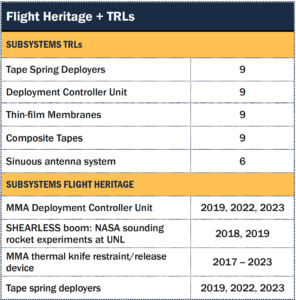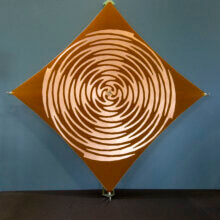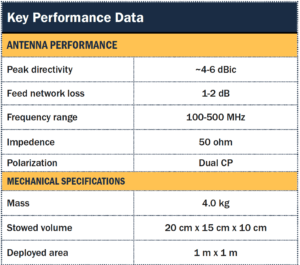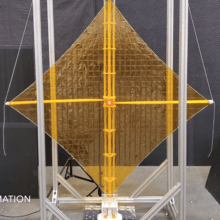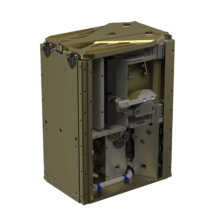High TRL, Low Frequency
For applications on small spacecraft, the use of low frequency antennas is often limited because of the size of the antenna required. By leveraging innovative technologies such as active thin-film membranes and high-strain composite tape booms, MMA has developed, successfully tested, and is on track to gain flight heritage for a compactly stowed, deployable low frequency sinuous antenna that fills this critical gap.
- MMA’s LAMBDA Sinuous Antenna showing twisted pair transmission lines.
- Back of LAMBDA antenna showing mechanical structure.
Proven Capabilities
Sinuous antennas are attractive due to their symmetric bi-directional beam patterns, low axial ratio across larger beam angles, and broad bandwidth. MMA’s sinuous antenna design is fed from two twisted pair transmission lines, 90˚out of phase, at the center of the antenna to yield circular polarization, as shown above.
In 2021, during the development of the low frequency sinuous antenna design, a rigid antenna was built and mounted to a tower in a corn field at the Purdue Agronomy Center for Research and Education (ARCE) in order to conduct outdoor experiments. The antenna was successfully able to link up with satellites in orbit and receive their signals.
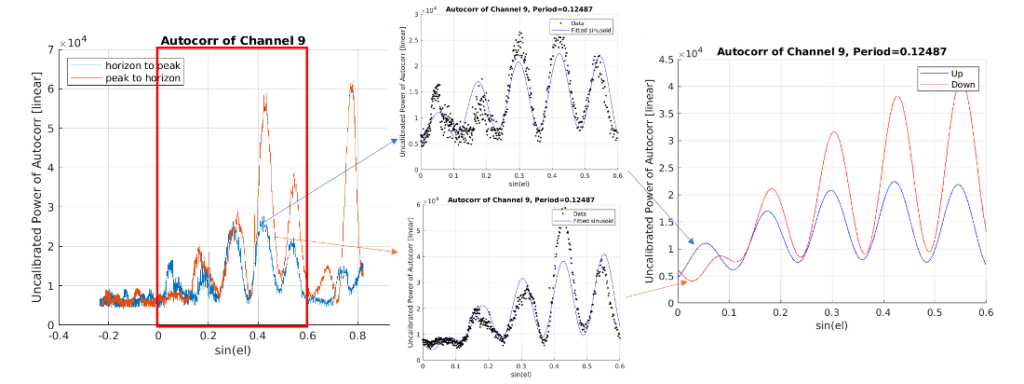
I-band (137 MHz
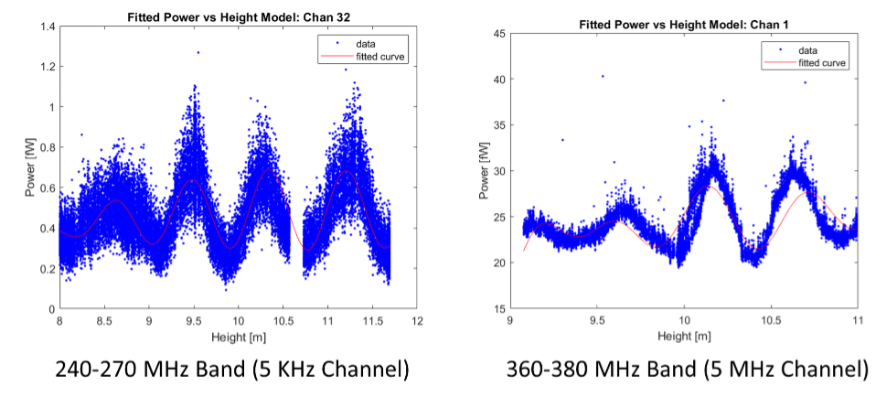
P-band (240-380 MHz)
- LHCP radiation patters and corresponding axial ratios demonstrating that this is a ~5dBic antenna.
The testing demonstrated reception of actual SoOp signals in 3 design bands (137, 255, and 370 MHz). Thus, the sinuous antenna was shown to work as designed at the frequencies of interest.
Deployment Architecture
The thin-film membranes on which the RF features are etched need to be tensioned by a structure. The high-strain and bi-stable nature of composite tape booms allow them to easily roll up into a very small package but deploy to form a very stiff and determinate structural boom. High-strain composite booms have been leveraged at MMA into multiple applications in both passive (energy-driven) and active deployment systems, and our in-house expertise allows tape springs to be designed and manufactured for high reliability. MMA’s sinuous antenna deployment architecture is comprised of a 3-longeron truss boom activated by a motor and synchronized gear box in one direction, providing the majority of the structural system stiffness. The second direction deployment is done by MMA’s self-deploying SHEARLips (patent pending) deployer assembly. The system utilizes the tension in the antenna membrane to stabilize the SHEARLips to the truss boom.
- LAMBDA sinuous antenna shown with non-RF membranes, fully deployed with truss and outrigger booms visible.
- Rendering of sinuous antenna fully stowed in a 15 cm x 20 cm x 10 cm volume.
The sinuous antenna includes a custom, flight heritage electronic controller that manages the payload prior to and throughout the deployment. It presents a robust standard RS-422 serial interface that provides critical configuration and status information on the system and allows simple commanding to execute operations. The controller provides active thermal management for the motor drives in the vertical booms and motor actuation rates, as well as actuator positions and sequencing to eliminate the possibility of adverse deployment geometries. The controller can also manage the activation of the system release mechanisms and provides deployment status feedback. It can also be offered fully radiation tolerant for harsher space environments.
For over a decade, MMA has been successfully developing and flying its highly reliable, deployable membrane technologies including the dragNET deorbit system, and numerous membrane-based reflectarray antennas.
